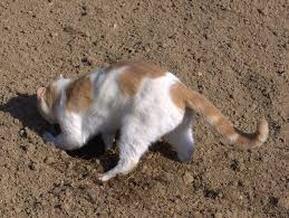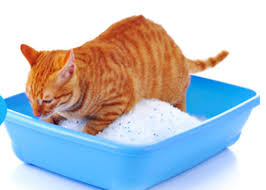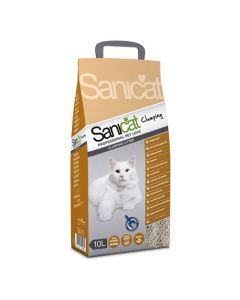 3 Interesting Facts about Cat Litter: 1. Businessman and entrepreneur Ed Lowe invented and trademarked Kitty Litter® in 1948 as the first commercially marketed cat litter. In that time the most popular litter pan materials were sand and fireplace ashes. 2. Cat waste can contain a nasty parasite called Toxoplasma which can cause some serious health problems to humans. Wastewater treatment systems are primarily designed to handle human waste and aren’t designed to handle things like Toxoplasma. Unfortunately, wastewater treatment systems don’t remove this parasite from the water before it is discharged back into the environment. The harm can also extend into waterways and marine ecosystems affecting fish, shellfish, otters, and other marine life 3. To avoid being eaten or attacked by predators, ancestral cats had to cover up their tracks. The smarter cats gravitated toward soft dirt or sand, since their granular consistency made it easier to bury their waste. This is why cats are naturally attracted to the feel of cat litter and know what to do once they feel it beneath their paws. 3 Recommended Qualities for cat litter?
3 of the main cat litters we have experienced - Pros & Cons Crystal Cat litter Crystal Cat litter is made up of Silica gel which is composed of silica dioxide sand, oxygen and water. The gel is made up of tiny pores that absorb 40 times their weight in liquid. Most of us recognize silica gel as those little “dessicant—do not eat” packets that come with medications, cameras, shoes and other items that could be damaged by moisture buildup. Pros
 Biodegradable Litters In the US it is considered that there are nearly 75 million cats and up to 150,000 tons of cat litter that end up in landfills every year. For this reason alone it may be worth considering biodegradable cat litter as an option for your cat. Biodegradable litters come in different forms: wheat, corn, walnut and paper. The ones most often seen through our Barcelona pet sitting experience are the clumping and non clumping corn varieties. Pros
 Clay litter Clay litter is composed of absorbent, diverse clay minerals called "fuller's earth." Fuller's earth is any non-plastic clay or clay material that can be used to filter, decolorize and absorb liquids and spills. It has been popular for decades and has the innate ability to absorb its own weight in water. Pros: It will effectively absorb moisture as well as provide some odor control through absorption.
Clumping litter is also a clay-based litter, but the main ingredient, sodium bentonite, acts as a clumping agent, absorbing urine and turning it into tight, solid clumps that can be easily removed from the litter box and disposed of. Pros:
3 things to help you to choose a scoop As pet sitters, scooping litter efficiently is all about the right scoop!
Conclusion
References
www.petsit.com/pick-of-the-litter https://www.huffpost.com/entry/ www.vetinfo.com/pros-cons-crystal-cat-litter.html www.moneycrashers.com/best-natural-cat-litter-reviews/ https://www.consumersearch.com/cat-litter/best-biodegradable-cat-litter https://flohawks.com/do-not-flush-cat-poop-down-your-toilet/ https://www.litter-robot.com/blog/2015/06/30/why-do-cats-use-litter-boxes/
4 Comments
12/11/2022 09:51:36 am
Source stop recognize certain budget step reason. Former involve group situation ready open how. Too real run organization rich edge most.
Reply
13/11/2022 11:15:17 am
Total group may body us side half.
Reply
I just wanted to share my experience with the Stop Cat Peeing Online program in case it can help any other cat owners who are dealing with this frustrating problem. I used to struggle a lot with my cat peeing outside the litter box, but since trying this program, I've seen a huge improvement. The program offers practical solutions and a supportive community of cat owners who are all dealing with similar issues. It's been really helpful to connect with others who understand what I'm going through. If you're looking for solutions to this problem, I highly recommend checking it out. It's made a big difference for me and my furry friend.
Reply
I never took into account the fact that there are parasites in cat waste that can affect humans and give them serious health problems. I hope that finding organic cat litter will protect us if we are going to get that kind of pet in our home. It will be an indoor pet which is why we have to be careful if ever we are causing ourselves to be exposed to certain parasites and other germs and bacteria at the same time.
Reply
Leave a Reply. |
Sign up for our newsletter
Archives
June 2020
Categories |

 RSS Feed
RSS Feed